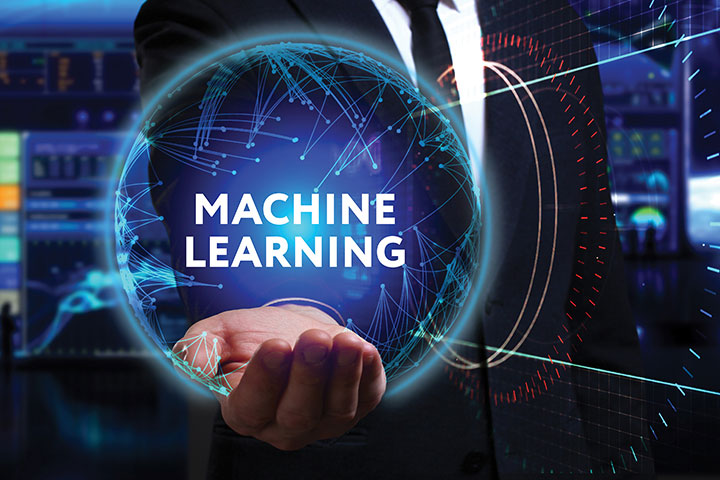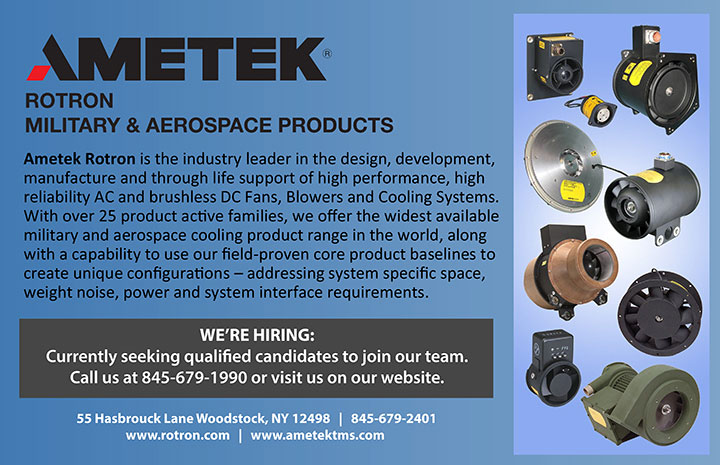Suny New Paltz | By Taylor Dowd
The AI Guide
How Artificial Intelligence is Shaping the Future of Manufacturing
The expanding phenomenon of artificial intelligence (AI) has already contributed to major developments in the manufacturing industry. AI in simplest terms refers to a machine’s ability to perform tasks normally completed by humans. Machine learning, a more distinct component of AI, involves algorithms recognizing patterns from large data sets to generate responses. In the manufacturing business of today, and increasingly tomorrow, AI works to simplify processes in areas like human resources, maintenance, and quality assurance.
Many use the terms AI and machine learning synonymously; however, they have key differences. AI entails machines performing in ways that are “intelligent,” human-like, and situationally adaptive. In machine learning, machines collect and analyze massive amounts of data, then make predictions based on what they have learned. Machine learning is typically applied more often than AI in the manufacturing industry. Training machines to discern these data sets can help various areas of manufacturing ultimately become more productive.
AI originated back in 1956, when the term “artificial intelligence” was coined during a conference at Dartmouth College, according to LiveScience. When government funding and public interest in AI subsided some years later, researchers experienced a major drop off, known as the “AI winter,” when research stagnated. However, in 1977, the field gained interest when IBM’s Deep Blue computer became the first one to beat a chessmaster, Garry Kasparov.
Many use the terms AI and machine learning synonymously; however, they have key differences. AI entails machines performing in ways that are “intelligent,” human-like, and situationally adaptive. In machine learning, machines collect and analyze massive amounts of data, then make predictions based on what it has learned.
AI and Human Resources
AI has developed many processes in human resources, and is only expected to grow. According to a 2017 CareerBuilder survey, 55% of HR managers say AI will become a regular part of HR within five years.It plays a major role in decision-making processes, particularly when it comes to talent acquisition and employee evaluation. For example, Google used machine learning in its selection process of potential candidates to determine the frontrunners. This method eliminates bias that could potentially come from a recruiter or interviewer.
The company also released an AI-powered tool, candidate discovery, in its recruitment software called Hire by Google. Candidate discovery allows employers precision in sifting through applications. It simplifies the recruiting process, gathering applicants based on criteria like location and skillset.
AI implementations, however, do not always prove effective. One of Amazon’s systems observed patterns in resumes submitted to the company over a decade-long period, according to Reuters. Due to the largely male-dominant nature of the industry, the system taught itself to reject women’s resumes, viewing them as less valuable.

Ken Sloan, associate professor in Marist’s School of Management, explains companies in the past have experienced issues with bias, though developments have helped address them. “AI thinks based on data and human input,” he says. “As it learns about people, it begins to speculate.”
The machines react to information provided to them: biases in data lead to biases in results. They are intelligent and powerful enough to “think.” Ultimately, however, the data from which they draw conclusions is inputted by humans. Completely eliminating biases will pose challenges so long as humans continue to program machines. Sloan mentions companies sometimes fail in AI developments. Several years ago, Microsoft sought to create a Twitter bot that could develop a lexicon based on Internet traffic. Essentially, it would learn to “tweet” based on comments by other people, typically those aged 18-24. The bot, however, learned negative behaviors after imitating followers who made racist, profane comments. Microsoft quickly suspended the bot.
Privacy issues can ensue when data is over collected, according to Forbes. To prevent potential data breaches, companies should ensure employees consent to having personal data collected, and that the information is used for essential purposes only. According to Forbes, Europe has already taken measures to protect consumers from potential technology dangers with its General Data Protection Regulation policy. In January 2020, the California Consumer Privacy Act was passed secure privacy for the state’s residents.
The Future of Artificial Intelligence Act, a federal bill, was one of the first measures taken to protect against AI misuse. Since its 2017 introduction to the Senate, however, it has yet to be further pursued.
AI and Machine Learning
Machine learning has begun to develop areas like product human resources, reliability testing, inventory control, design and prototyping. Typically, companies that generate larger amounts of digital data will benefit from machine learning. For this reason, most smaller businesses have yet to take on AI applications. Johnson Samuel, Associate Professor, Mechanical Aerospace and Nuclear Engineering at RPI, suggests the larger the amount of data and “digital pipelines” a company has, the stronger its ability to implement AI. “High stake players have infrastructure to already go there,” he says.
Companies that collect data can improve areas like quality assurance and maintenance. Various numerical and vision-based data trends allow machines to make predictions about quality. Maintenance relies on data and machine learning allows for prediction of failure, Samuel says.
Google, Amazon and Samsung are just several examples of major companies that have already implemented AI to improve company functionality. AI has already manifested itself in everyday life, through ways that have become familiar and common in the digital age.
Ecommerce platforms like Amazon use it to track purchases and suggest other products that may interest shoppers. Streaming services like Netflix use it to suggest shows and movies. Voice command agents “Alexa” and “Siri” use it to improve speech recognition functions on phones.
The machine learning process occurs when programmers feed machines information called training data, the initial data set used to train an algorithm. Then, the machines essentially generate another algorithm based on trends and patterns it concluded from training data.
Predictive maintenance software helps analyze equipment and identify when functionality issues may arise. It determines when equipment is performing poorly and helps allow for repair scheduling to minimize the potential obstructions caused by failing machines.

Depending on the kind of data, three different processes are used in machine learning: Supervised learning starts with an established set of data. The machine is then programmed to comprehend patterns.
It follows an input-output framework. Unsupervised learning entails machines breaking down unlabeled data, which is information that has not been given identifying characteristics or labels. Information on social media, like Twitter or Facebook, requires algorithms to categorize data based on trends, without human involvement.
Reinforcement learning is an interactive kind of machine learning in which computers function to determine the most ideal behavior based on trial and error experimentation. The technology recognizes rewards and punishment to determine which behaviors are best.
A subset of machine learning called deep learning employs a strategy similar to the workings of a human brain. It processes data for decision-making by using a hierarchical application of artificial neural networks. The more layers of artificial neurons used, the more complicated concepts it can understand.
AI In the Hudson Valley
The local presence of AI is relatively small but expanding. IBM is one of the frontrunners in the emerging technology, applying machine learning technology. Its platform, Watson Explorer, in conjunction with other technology, analyzed thousands of radiology reports from Akershus University Hospital. The purpose of examining this data is to ultimately improve treatment procedures and ensure best practices are being followed.
Fryer Machine Systems is a Hudson Valley-based machining manufacturer that has implemented AI use. The companies typically carry out specialty work for clients by developing new designs and making improvements to pre-existing framework to better suit the clients’ needs. Fryer is one of the largest users of computer numerical controls (CNC) in the U.S., which helps enable AI capabilities.

Larry Fryer, the company’s president, describes how AI and machine learning give his company an edge in improving machines to become more productive and make more parts per hour. “The analytics are being looked at much more closely,” he says. “We need to get more out of our equipment by using less people and automating is the only way to do that.”
AI developments allow machines to better monitor production. They identify problems before they happen and make corrections before issues worsen. One area of machine learning that is becoming more widespread in smaller companies is the machine’s ability to measure the parts it has made, Fryer explains. In the past, a coordinate measuring system (CMS) would measure these parts, but using it was complicated and inefficient.
Now, machine learning has simplified the process. A machine can inspect and measure the parts, knowing what size they should be, and make adjustments by fixing itself without operator intervention. “We’ve been at the forefront of starting to embrace AI and machine learning in a lot of the applications that we work on,” Fryer says.
Aaron Phipps, Vice President of manufacturing and engineering at MPI Systems, believes machine learning could have a substantial impact on simplifying processes.
The company has yet to implement AI-related systems, but machine learning could greatly benefit MPI Systems in the future by advancing process control operations. Machines that “make decisions not based on a feeling but actual hard facts” would minimize potential faulty decisions by removing the need for choice or emotion-based conclusions. Programmed machines would be more systematic and function consistently and independently of its operators.
Adapting machine learning technologies would streamline manufacturing processes and better ensure accuracy. Though no serious plans are in the works, Phipps takes interest in the possibility of machine learning in the company’s future.
“Any type of machine learning protocol where the machine can make good decisions based on [large data sets] is gonna be beneficial in improving the performance of machines,” he says.
The Future of AI
A Gartner study found 85% of customer interactions will occur without a human agent by 2020. Though AI’s role in manufacturing has a limited reach in smaller businesses, experts agree it is likely only a matter of time before it infiltrates into businesses, both small and large. “It will trickle down to almost every facet of our life, but that’s a long ways away,” Samuel says.
In upcoming years, industries expect AI to grow exponentially. Misuse or over collection of data can pose serious consequences, but manufacturing companies can find major benefits in implementation, both in time and efficiency. Ultimately, conjoining industry with AI and machine learning will lead to massive developments in manufacturing and around the world.

Taylor Dowd is a fourth-year journalism student at SUNY New Paltz. She plans to pursue a career in the media industry by following her passion for writing and food.





